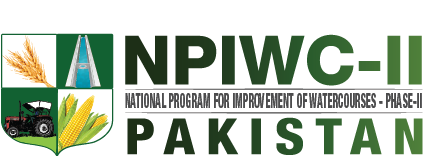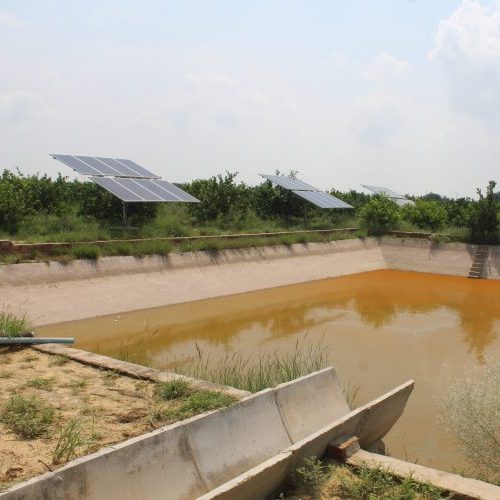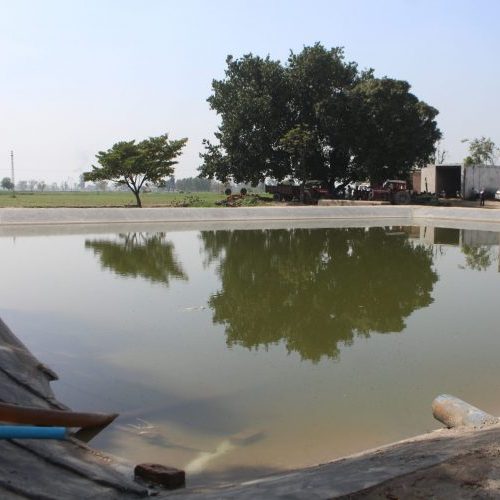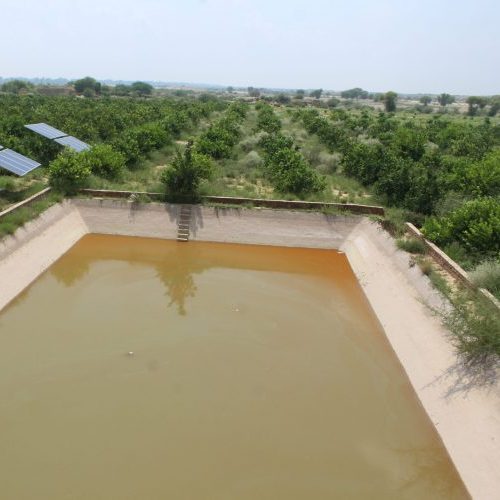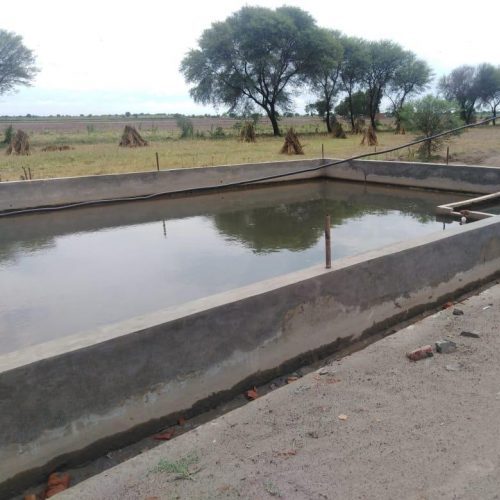WATER STORAGE TANKS
WATER STORAGE TANKS
Water storage tank enables to capture and store canal water, surface water runoff during the rainy season, tailwater from furrow irrigation so that it may be used for many applications of irrigation agriculture. The tanks are constructed at the locations where canal water can be collected and stored under gravity and adequate runoff can be accessible for the fields that will be irrigated using the stored water.

Eliminate poverty by promoting Agriculture
PURPOSE OF WATER STORAGE TANKS
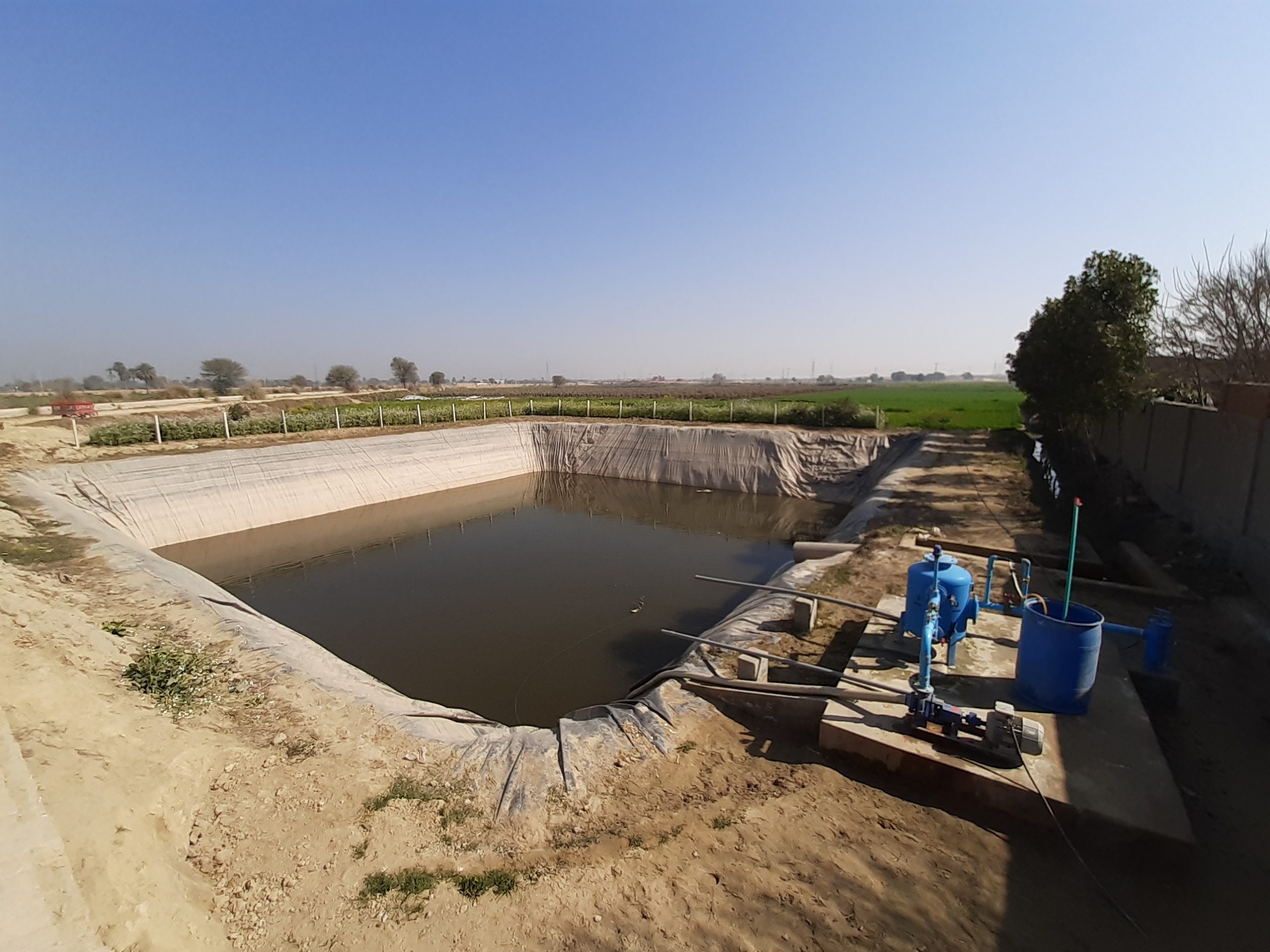
PURPOSE OF WATER STORAGE TANKS

The purpose of providing water storage tanks includes the followings:
- Store water during rainy season and times of no use in the commands of perennial/ non-perennial canals for subsequent irrigations at the critical crop growth stages.
- Provide flexibility for storage of plentiful canal and rainfall runoff water for its more expedient use subsequently
- Collect, store and filter water from:
- Small dams, springs, streams, nallas etc.
- Rainfall runoff over agricultural catchment during rainy season
- Tube wells and dug wells of low flows
- Tail waters from agricultural fields
- Regulate the flow so that it can be used efficiently when needed in large flow rates. It is planned that 14,932 On Farm Water Storage Tanks will be constructed during project period to supply the supplemental irrigation.
BENCHMARKS FOR CONSTRUCTION OF WATER STORAGE TANKS
BENCHMARKS FOR CONSTRUCTION OF WATER STORAGE TANKS
Main benefits of a water storage tank are:
- Cropping intensity might be increased by 5% to 20%
- Enables to grow water-sensitive crops sustainably
- Reduce energy use against groundwater pumping
- Reduces vulnerability to drought and seasonal variations in rainfall
- Improve water quality of saline groundwater
- Farm income is increased substantially
- The design and cost estimate is prepared by OFWM-staff and then finally approved by the Project consultants.
- Design and cost estimate of water storage tank (preferably trapezoidal shape) with geo-membrane lining (minimum 0.5 mm wall thickness) based on the size of water storage tank.
- The depth of water storage tank shall not exceed from 5 feet with sufficient allowance of free board (preferably 0.30 m).
- After approval of designing and cost estimate of WST, design will be submitted to Directorate General Agriculture (On farm Water Management) for approval to construct the water storage tank as per approved design.
- OFWM staff shall provide technical guidance and supervision to the farmers.
- The rates of geo-membrane lining will be fixed by the Pre-qualification Committee (PQC). The rates of excavation, geo-membrane laying/ jointing and earth cover (clay) will be approved by District Rate Committees (DRC) keeping in view the Market Rates System and respective Finance Departments of the provinces and other areas.
- Excavation of water storage Tank and anchor trench shall be accomplished as per standard engineering practices. Proper compaction of sub-grade should be ensured.
- Project Consultants will inspect the excavated water storage tank and the quantity and quality of geo-membrane.
- Proper earthen cover (clay) up to 0.30 m depth shall be provided over the installed geo-membrane, if required.
- After completion of geo-membrane lining as per approved design (before filling the WST with water), the OFWM staff will prepare the complete report on the prescribed proforma indicating the constructed dimensions and detail of total expenses incurred for the construction of WST.
- The DDA (OFWM) shall forward the Completion Report to the Project Consultant for physical verification.
- Project Consultant will check the completion report of the lined WST and certify the completed works as per approved design and recommend release of project subsidies to the farmer on an actual cost basis.
- In order to qualify to receive the Project subsidy, the farmer shall have to complete the construction of the water storage tank within 60 days after issuance of the approval for construction of the WST.
- On receipt of the Verified Completion Report from the Project Consultant, project subsidy at 60% of the verified costs will be released by the Director-General Agriculture (WM)/ Project Director to the farmer through cross cheque.
- If the farmer intends to construct water storage tanks for smaller storage capacity, design & cost estimates shall be prepared accordingly and the actual cost incurred shall be verified by the Project Consultant and 60% of that cost shall be released to the farmer.
The selection of farmers for the construction of the water storage tank will be made on following criteria:
- Farmers must have an agriculture land in canal command area or non-canal command area.
- The quality of available water is suitable for irrigation.
- Farmer agrees to develop the farm tank for his agricultural land.
- The applicant is willing to contribute his share as per the approved cost-sharing formula.
- Farmer agrees to use the stored water for irrigation purpose.
- Applicant is not a defaulter of any government financial institution.
- Farmer agrees that he/she will be fully responsible for successful operation of the water storage tank.
- The farmer will abide by the decisions of the Project Implementation Committee (PIC) as well as respective Secretaries of the relevant departments or his/ her authorized representative and will not challenge the same in any court of law.
- Full cost of government share will be recoverable from farmer as arrears of land revenue in case he/she violates any of the conditions.
- If any damage occurs during or after construction of water storage tank then department is not responsible for that.
- He/she agrees to rectify any damage which might hinder the usefulness of the intervention regarding irrigation of crops.
Cost sharing of water storage tanks would be on the ratio 60:40 i.e. 60% by the project and 40% by the farmers.
The design and cost estimates of water storage tanks are approved by considering the crop water demands, canal water availability, potential rainwater availability and excess canal water during rainy season. Water storage tanks having storage capacity to meet peak crop water demands at critical crop growth stages for specific period will be preferred.

“A FOOD SECURE PAKISTAN”
“A FOOD SECURE PAKISTAN”
